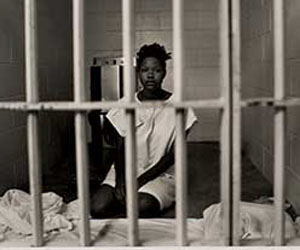California is, as the time-worn adage has it, our nation’s bellwether, and nowhere is that truer than in the Golden State’s prison crisis. California’s inmate population is among the highest in the nation. Its complex of prisons spills over with tens of thousands of inmates housed in every available inch of space and sleep-stacked three-high. So overcrowded are California’s prisons that the state penal system has been successfully sued for violating the constitutional rights of inmates—essentially by subjecting them to a public-health crisis. That its inmates consistently resort to violence in prison should come as no surprise.
The dire state of California’s prisons can, in part, be traced to its draconian “three-strikes law,” which throws three-time felons behind bars for a mandatory 25 years. Overflowing prison populations have, in turn, contributed to that state’s bleak economic future, helping consign California to a perpetual budget deficit, annual financial crises, and repeated deep cuts in education and social funding. The state currently spends a staggering 10% of its annual operating budget, or $10.8 billion, on its prison system and its nearly 170,000 prisoners—more than it spends on the University of California system, once the jewel in the crown of American public higher education.
And which Americans have borne the brunt of California’s prison boom? Mostly minorities, African Americans especially. In 2005, the state was incarcerating, on average, 5,125 for every 100,000 male adult blacks in the population—nearly four-and-a-half times more than for Latino men and six-and-a-half times more than for white men. California’s prisons are also notorious for separating their prisoners by skin color, a form of segregation that was, one lawyer remarked, “not tolerated in any other aspect of American life and hasn’t been for fifty years. It’s the shame of California.”
As Michelle Alexander, legal expert and author of a startling just-published book, The New Jim Crow: Mass Incarceration in the Age of Colorblindness, points out in her first TomDispatch post, California’s racially infused prison quagmire is only a snapshot of a growing racial divide, one which includes the formation of a new undercaste in America that loses its normal rights at the prison gates and often never recovers them.












